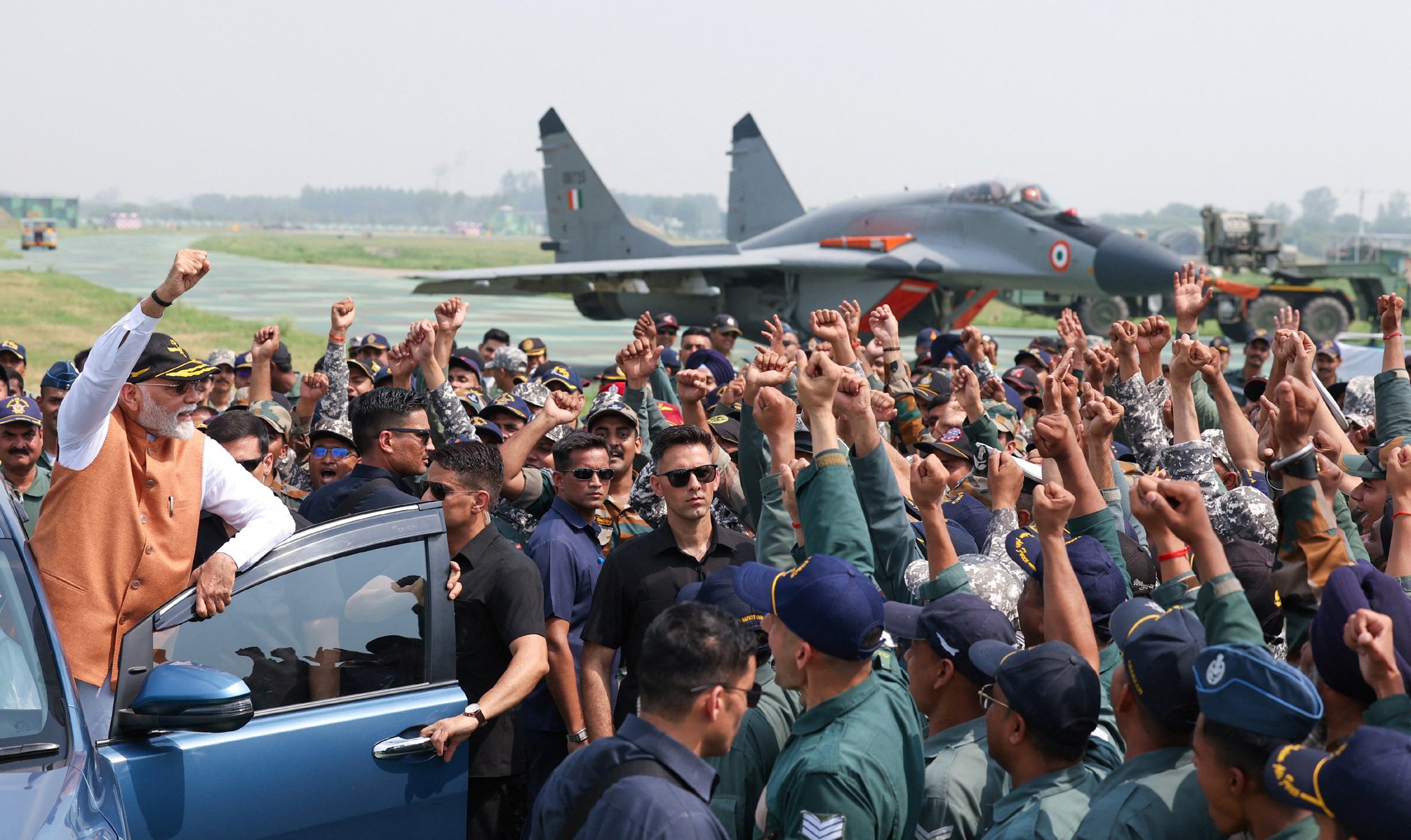India claims military superiority over Pakistan despite Islamabad’s Chinese arms
New Delhi says Indian Air Force strikes successfully ‘bypassed and jammed Pakistan’s Chinese-supplied air defence systems’

India proclaimed its technological superiority over Pakistan’s foreign-made weaponry on Wednesday, specifically citing Chinese defence systems Pakistan’s military used during the recent clashes – New Delhi’s first official notice that China had indirect involvement in the lethal dispute.
In a statement by its information wing about what India calls Operation Sindoor against Pakistan, New Delhi claimed that the Indian Air Force had successfully “bypassed and jammed Pakistan’s Chinese-supplied air defence systems”.
Operation Sindoor was launched on May 7, when India struck nine alleged “terror bases” in Pakistan – in retaliation, Indian officials said, for the April 22 killing of 26 tourists in Kashmir, a region claimed by both countries. India has blamed Pakistan for the attack, calling it an act of terrorism, while Pakistan has denied the allegation.
The May 7 strikes were followed by a sharp escalation: Pakistan sent hundreds of drones into Indian territory, India targeted Pakistani military facilities, and the air forces of both nations engaged in dogfights during the next three days. Indian officials have described the ensuing missions as part of Operation Sindoor.
Amid mounting international pressure and fears of a potential nuclear escalation, India and Pakistan agreed on Sunday to a ceasefire. However, New Delhi described it as merely an “understanding” and a temporary “pause”.
“On the morning of May 8, the Indian Armed Forces targeted air defence radars and systems at multiple locations in Pakistan. An air defence system in Lahore was neutralised,” the statement said.
The mission, which targeted Pakistani airbases including the Nur Khan Air Base in Rawalpindi, was completed in “just 23 minutes”, the statement added, showing India’s “technological edge”.
Rawalpindi houses Pakistan’s military headquarters as well as the nation’s nuclear command.
As evidence of “hostile technologies neutralised by Indian systems”, the statement noted the recovery of “pieces of PL-15 missiles (of Chinese origin)”.
“These were recovered and identified, showing that despite Pakistan’s attempts to exploit advanced foreign-supplied weaponry, India’s indigenous air defence and electronic warfare networks remained superior,” it added.
China said it had “urged both sides to act in the larger interest of peace and stability,” adding that it was “willing to continue to play a constructive role to this end”.
But Pakistan’s deployment of Chinese weapons in the conflict drew significant international attention as the West, especially the US, remains wary of Chinese military advances and Beijing’s influence in the Indo-Pacific region.
Last week, China’s state broadcaster re-aired footage of a robotic production line for its advanced PL-15E air-to-air missiles – hours after Pakistan claimed to have used the weapon to shoot down Indian fighter jets.
Pakistan also acknowledged deploying J-10 fighter jets made by China during the four-day conflict.
While India has not confirmed the loss of any jets, Reuters cited two US officials in a report that at least two aircraft had been hit.
The Chinese footage was part of a segment showing the PL-15E, an export version of the PL-15 missile developed for long-range aerial combat. With a range of over 200km (124 miles), it is designed to integrate seamlessly with Chinese-made fighter jets – making it a key component of China’s arsenal and a competitor to Western air-to-air missile systems.
Chinese weapons accounted for 81 per cent of Pakistan’s total weapons imports over the past five years, according to the Stockholm International Peace Research Institute. During that period, Pakistan was China’s largest military customer, receiving 63 per cent of all Chinese arms exports.
Also on Wednesday, Indian users reported access was blocked to the social media accounts of China’s state-run Global Times and Xinhua news agencies.
The move followed India’s embassy in Beijing last week demanding that Global Times “verify facts and cross-check sources” after the outlet reported that Pakistan had shot down multiple Indian fighter jets.